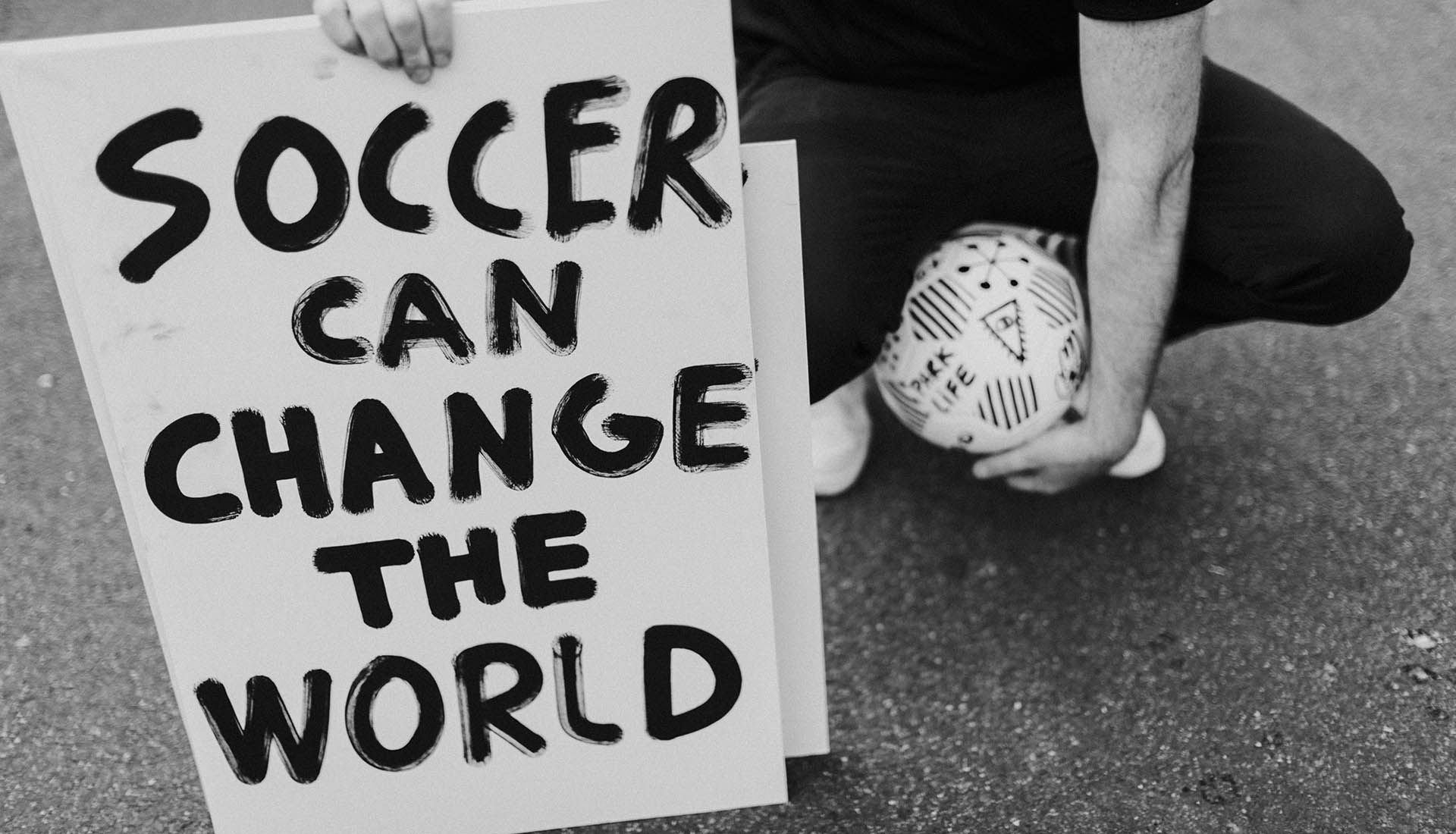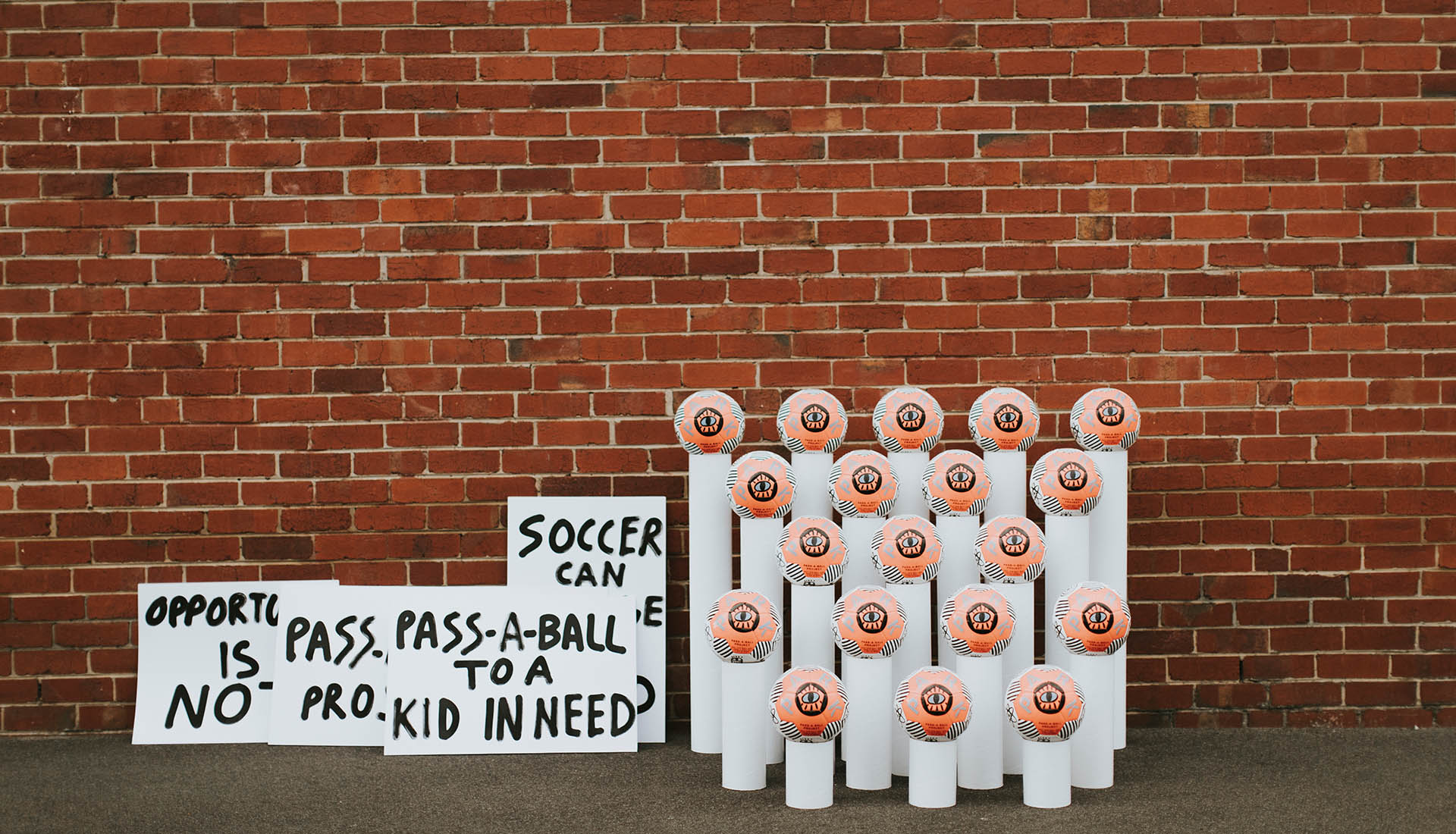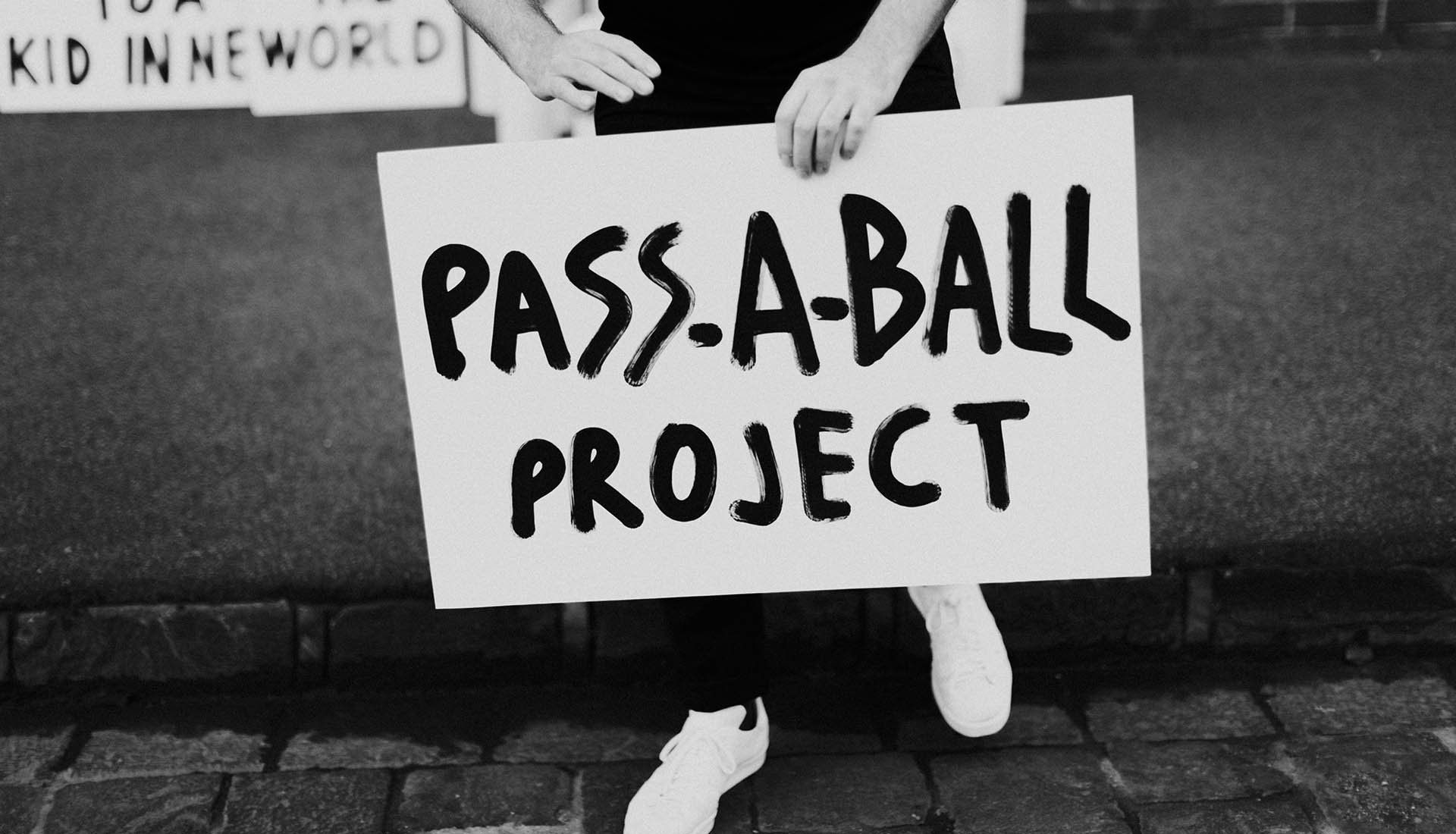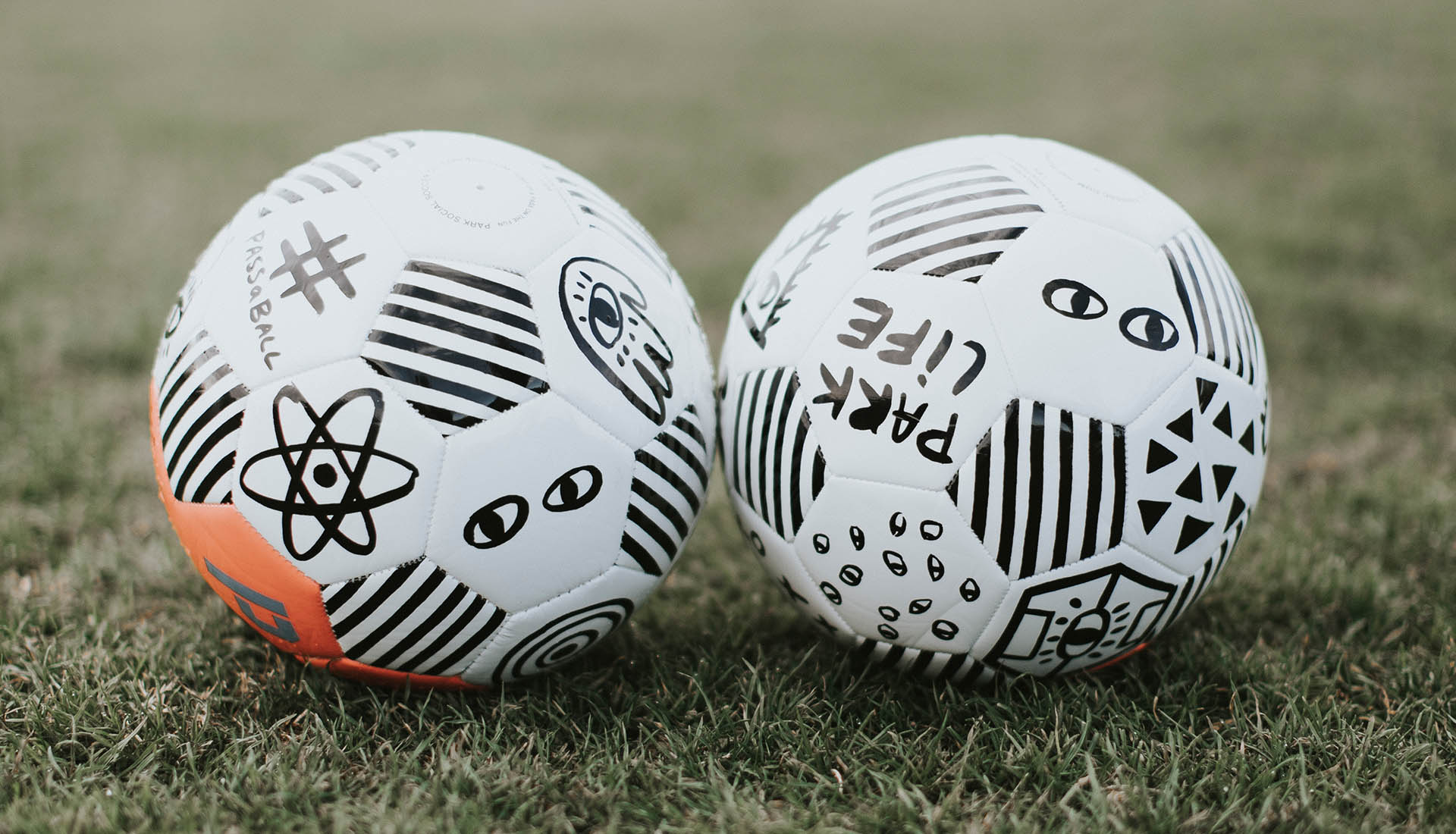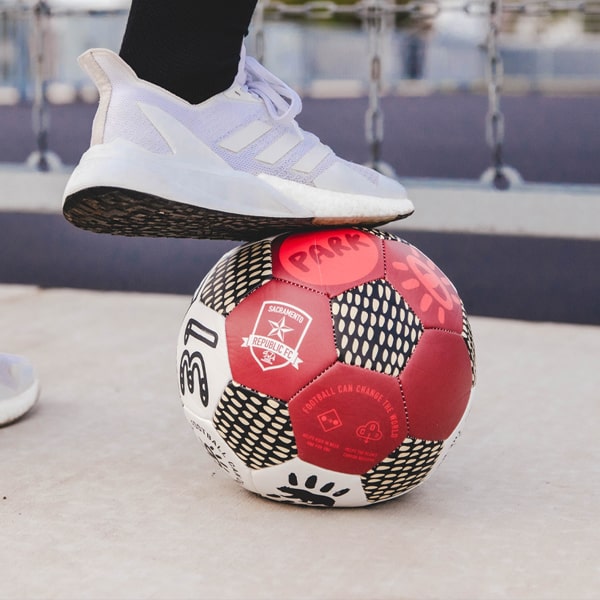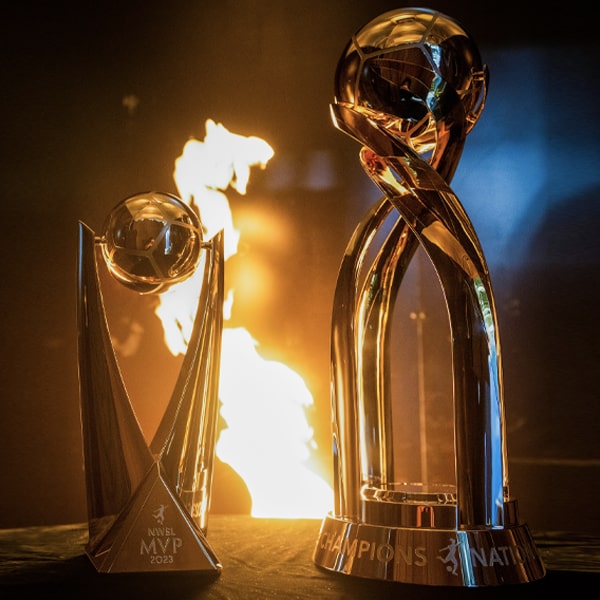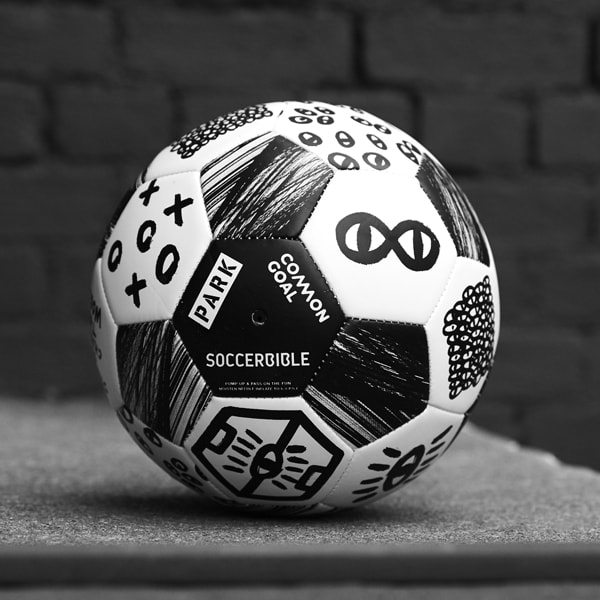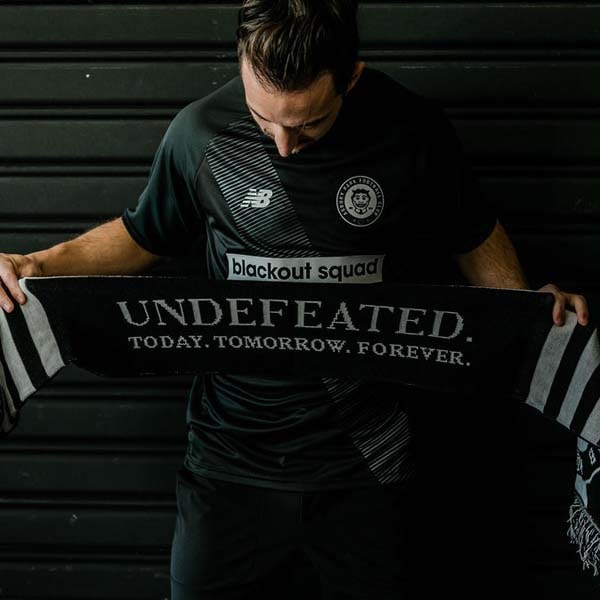The ‘Pass-A-Ball’ project is something that can positively change people's lives. Looking to use the power of the game for a greater good, we spoke to the people who put the great back in the game, in issue 9 of the SoccerBible Magazine.
An initiative that looks to intersect the juncture between football, creative cultures and ethical thinking, PARK Social Soccer Co. is a force for good. It’s a setup that uses football to positively affect the lives of disadvantaged children and their mission is simple, though the substance is sizeable. The mantra: “For every ball you purchase PARK will Pass-A-Ball to a kid in need.” Getting a greater understanding of the task in hand, co-founder Sam Davy talks us through his journey and explains how far the distance over which a simple gesture can travel.
So let’s go back to the very start. Before you created PARK, you were a Creative Director at Apple. Was that a tough job to leave and have you always had that natural pull towards football?
Yes, it was certainly a difficult decision to leave Apple. I thoroughly enjoyed my time there, it was an amazing period to be at the company. I’ve always played football socially, as a kid growing up in Hull and then while working in London, San Francisco and Melbourne. It was actually football that got me my first job in the design industry. There was an industry 5-a-side competition in Spitalfields Market, I’d just left university and a mate suggested I go down and meet some people. As it turned out, one team were short of players and they asked me to fill in. The next day I landed an internship at a small design firm that turned into a real paying job.
What was it that planted the seed to start this project? Was there something that inspired you to take the jump?
Ten years ago Steve Jobs called me into a meeting and asked me to explore how Apple, ‘can do well by doing good’. This was the first time I’d contemplated the idea of connecting social awareness with the bottom line. I was fascinated. I developed a solution called iTunes Action; it used the connective tissue of the iTunes Store to give customers and artists a global platform to create positive change. He loved the idea, but our timing was off as shortly after his health took a turn for the worse and sadly he had to take indefinite leave from the business.
If you had to summarise everything the project stands for, how would you define it?
PARK Social Soccer Co. focuses on breaking the cycle of disadvantage by introducing the next generation to the imbalance of opportunity amongst their peers and gives them a platform to act, through a sport they love. Hopefully this sews the seed of social change early, and in a way that’s relevant.
Has it restored a little faith in humanity as to how well it’s been received?
The simple answer is yes. Seeing kids understand the message and hearing them repeat it, unprompted in their own words really hits home. Also seeing parents using the ball as a catalyst to discuss the imbalance of opportunity with their kids reinforces that the project is working and can work on a much larger scale.
In crossing cultures and bringing something so creative to the football world, has it been a meeting of passions for you?
For sure it is. When I joined Apple in 2002, it was a very different company than the Apple of today. It was the challenger, the rebel. I see PARK in the same – albeit much smaller – light. The world is changing and the next generation demands a fresh perspective in football and sport – one that focuses on the imbalance of opportunity and connects with the grassroots in a meaningful way. A brand that they can call their own and use to create positive change.
What were the ambitions starting out? Where did you think you could take it?
In the early stages my ambitions were quite hand-to-mouth, small steps to see if my idea resonated with people. Then, as I grew more confident so did my ambitions for the brand. When I started to see the model working on a small scale I couldn’t stop myself from imagining how much positive impact it can create on a much larger scale. I certainly see a place in the global sport landscape for a socially conscious challenger brand driven by a new playbook.
Has it exceeded your expectations or do you just reset them when you hit the next milestone?
I just keep pushing them out further, it’s no fun unless you’re really stretching yourself and people’s perception of the brand.
Can you tell us about the experiences you’ve had on the journey with the project? Have you been able to see the difference giving a young child a ball has made?
The one story I keep coming back to is of a young boy called John. He and his brother Cosmos joined a children’s home in a rural area of Uganda supported by our partner Orphfund.org. John loves soccer, but had never had a real ball – he and his brother had made balls from discarded plastic bags. John joined the home with only a small backpack of belongings, so when he was given his own new soccer ball it became his prized possession. He is now doing really well at school and is playing soccer in the local team. Him knowing that a kid on the other side of the world thought about him and passed him a ball is a beautiful thing.
There’s a solid cause behind what you’re doing. Can you enlighten us as to just how significant a difference this can make on someone’s life?
I’ve learnt from observing how our charity partners work with kids in disadvantaged situations that no matter where you are in the world, if you are constantly being knocked back and marginalised, for any number of reasons including your race, belief, gender or physical appearance and abilities, kids can start to lose hope and belief in themselves.
Football can reverse this slide, they can instantly achieve something – a kick, a pass, a goal and receive positive feedback. They can also learn the values and benefits of being in a team, of being with other people that care about them and are there to support them and help them grow. Suddenly, it’s not a big leap for them to see that they can take this new-found confidence and skills into their life and achieve great things.
PARK amplifies these positive messages and results, connecting kids from around the world in one huge global soccer club. Passion for soccer is universal. It’s only opportunity that is not.
Have you had much response from the football world? Getting players behind it could only be a good thing you’d imagine?
Yes, the football world is really starting to get behind the project and we’ve also had a great response from the art and fashion worlds as well, with galleries, artists and stores getting behind the idea and helping to bring it to life in different contexts. The more varied voices we get behind the project the more impact we can create.
The game is truly growing in support in Australia. Have you noticed a positive change to the number of people following the sport?
The number of kids playing the sport is rapidly increasing. I’ve seen it first-hand on the training pitches and at the grounds on a weekend; the club I coach at has doubled in size over the past 5 years.
Unfortunately, this interest in the sport hasn’t fully translated into increased numbers at A-League games. Helping the next generation find their connections between playing the game and watching a professional league is important. I believe PARK can play a role in creating this connection, by amplifying the soul of the game and giving kids new ways of making an old story their own.
Can you talk us through your creative style a little? What’s the process in terms of how you make the footballs?
I find the current visual language of sport very fierce. The PARK creative style is my interpretation of a more soulful, lyrical language, one that is open and inclusive and speaks to a very diverse audience. I create the designs by drawing onto a blank ball. I literally sit with a black pen and white ball and start making marks. When I have something I like, I transfer the panels onto the Mac and layout out the design.
Your use of graphics is unique. Where do the shapes and ideas come from?
The PARK eye logo references the mystical concept of humans having a ‘third eye or minds’ eye’ that gives all of us our ability to be perceptive and to see beyond what is directly in front of us – super important if you want to imagine a better future.
My graphic style is influenced by many different people and things, it’s a big mash up really. I just push it through the filter of simplicity and past the barometer of can it be drawn and understood by a kid.
So where next for a project like this? Have you drawn out objectives for the next few years at all?
PARK is about connecting everyone who loves soccer, no matter where they live or what they believe. It’s about building a new type of business with a strong social purpose. It’s about bringing football lovers on an amazing journey with us. It’s about working together to build a global soccer club that creates lasting positive social impact, something the entire community can be proud of.
You can support the Park Social Soccer Co. and pass a ball to a kid in need here.
Photography by Aleksandar Jason for SoccerBible.
SoccerBible Issue 9 is available here.
